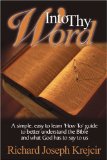Introduction
(Opening)
Each study contains the essential passages and elements written in a paragraph and outline format, with ample further Scripture references. It is designed for the student or leaders to go through it alone or in a group. Perhaps as you go over the material, mark the parts your students need to know and make sure you have time to cover them. Save the rest for when you have time, or go back to it after a year or so as review.
(Teaching and Discussion points)
- Most of our materials are in a paragraph and bullet point outline layout. With an opening, then teaching points, then an application, then questions.
- Remember, there are more questions and passages than the normal time of a class will allow, so plan accordingly. Pick a few 3 to 4 short passages or 1 to 2 long ones and focus there. Usually we give you the main passage up front.
- It is recommended that the leaders work through the issues and study first. This is essential for leading, as our studies are first for personal discipleship and edification, then to teach others. Thus, the thrust of the leaders study is to prepare yourself to teach, and to reach the people the Lord has sent to you. We have to be the people of God in order to do the work of God.
- Each lesson is designed for an hour of teaching plus. Thus, each one can be divided up to use what is needed. We recommend, because each class is different, you read through the study to determine your own lesson points and approximate times.
- Now each group is different, as some love to talk and discuss and others will sit there like cows staring at you.
- Power Point works wonders with this or any study, just type in the key points (bullets) and add images, then all you do is click away as you give the lesson.
(Applications and Devotions)
I have found it best for the teacher to use the first section as your "talk," and then ask the questions and discuss from there. Or you can have people read it in advance (good luck with short attention span teens!), or you can read it in the class, or have students read it (give it to them a week in advance, this works great with teens and young adults, older people do not like "home work" and some young people have too much).
Some people have student leaders read it, and give sections to your students to do in their own words. It all depends on your group and their age and educational range. You can use the first part as a combine the talk and discussion together. Because you will actually be studying and digging into a text, thus learn as you do as you teach.
It is also a good idea to give the Scriptures to various students in advance to read aloud when called on. Make sure they are comfortable to read in public and they are not wasting class time looking up the passages. Have them booked marked and ready. (Of course, looking up passages is never a waste of time; it is more of time management. Five (5) minutes spent looking up passages is five (5) minutes taken away from discussion and application.) This takes the "teacher show" approach away and gives more of the learning over to the students themselves.
Discussion Questions: They are designed to be done in a small group setting, but again can be used individually or in a large group. I recommend you break into groups of 4 to 6; you do not need adults if you are teaching high school students as long as you come back for questions and answers. They are capable to lead themselves with guidance and support. There are specific questions to ask your students to spur discussion, and to get them thinking and challenge them into the Lord's service. (Service is an outgrowth of discipleship, a response of gratitude to the grace we have been given that covered our guilt and fallen separated nature. God's Word will challenge and lead people to the Lord's path, it will convert, convict and teach. The only thing to worry about is not to get in the way of God.) The discussion for the first several sections are questions in 4 parts:
· First is an "opener" to spur thinking and get people talking.
· Second is a "to know it" where we are going over the essential information we are learning.
· Third is "getting deeper" by changing the way we think from our way to God's way, thus taking ownership of what is being taught.
· Fourth is the "application", sometimes a homework assignment, or something to ponder (thinking deeper).
The rest of the sessions are designed as an adventure to dig into the "steps," learning by doing!
And most important do not forget to pray! We recommend spending at least ¼ of your time in prayer. Pray before class with the leaders, then start off with an opening prayer, and end in small groups of 3 to 4 for prayer.
Permission: YES you may go ahead use and reprint and share our studies and articles. All we ask of you is to keep us in prayer, keep the name of our ministry, the authors name, link or URL address http://www.discipleshiptools.org/and any copyright information on the resources, and feel free to tell others especially pastors what we have to offer. And, of course, we always need partners and supporters to keep this going.
Be Blessed, the Into Thy Word team.










